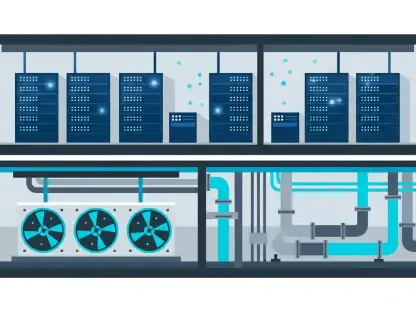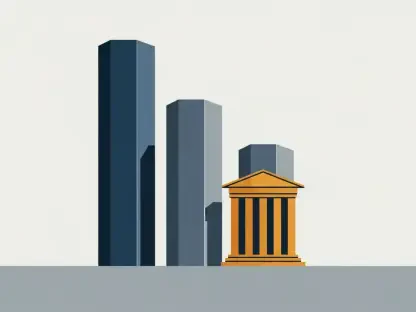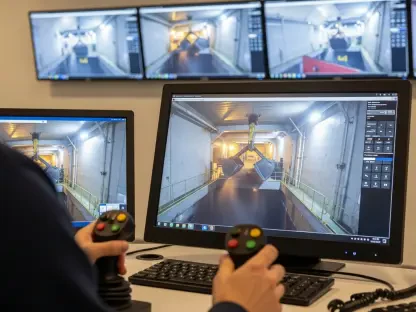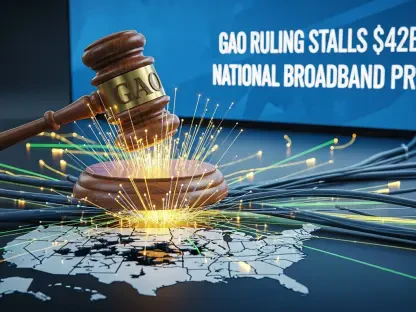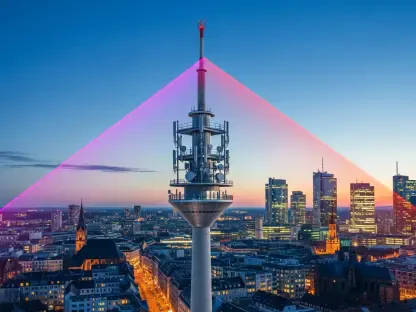Emerging from a landscape often marked by slow and expensive internet services, Timor-Leste is embarking on a transformative digital journey. This shift is largely due to pivotal enhancements in internet infrastructure that promise to reshape both the country’s economic and social landscapes. Traditionally, Timor-Leste has been recognized for having among the most sluggish internet speeds and highest costs worldwide. However, new technological advancements and governmental initiatives are setting a new course toward more efficient and accessible digital services. A groundbreaking development is the introduction of a low-earth-orbit satellite internet system known as Starlink, which has been operational since late 2024, aligning Timor-Leste closer to regional standards while paving the way for anticipated fiber optic technology. Although significant hurdles of high costs and slow speeds continue to exist, especially with the domination of major telecom companies, the atmosphere is ripe with potential change and digital inclusivity.
Challenges and Progress in Internet Connectivity
The current digital infrastructure in Timor-Leste is in its nascent stages, primarily hindered by the absence of a submarine fiber optic internet connection. This is vital for securing faster and more affordable internet, as observed in other countries with advanced systems. Starlink, available since late 2024, has become a crucial component in bridging this gap until the full potential of fiber optic technology is realized. State involvement is also noteworthy, as the government has sanctioned the establishment of a new state-owned enterprise tasked with managing cable connectivity. This enterprise is set to regulate wholesale prices and service provisions, thereby expecting to revolutionize access to internet services across different sectors. Despite these developments, the current state, dominated by telecom companies like Timor Telecom, Telemor, and Telkomcel, remains a formidable challenge due to persistently high costs and slow speeds.
The disparity in data pricing between Timor-Leste and its regional counterparts such as Cambodia, Fiji, and Samoa is a pertinent issue. While the general cost of mobile data in Timor-Leste is around US$1.92 per gigabyte, countries like Cambodia offer significantly cheaper rates at just US$0.12. Additionally, residential broadband services present an even steeper financial barrier with critical implications for households with average incomes under US$100 monthly. For instance, Starlink’s most affordable package is priced at US$40 per month, leaving it out of reach for many. The situation with internet speeds is similarly challenging; mobile internet averages 4.85 Mbps, and fixed broadband averages 6.10 Mbps. This starkly contrasts with neighbors such as Australia, which boast mobile speeds of up to 115.66 Mbps. The introduction of a reliable fiber-optic network may usher in improved speed and reduced costs, enhancing accessibility across various social and economic groups.
Socio-Economic Impacts of Digital Transformation
Timor-Leste stands on the brink of substantial socio-economic gains as part of its digital strategic plan, Timor Digital 2032. The digital transformation envisioned by the government encompasses an array of socio-economic benefits that extend beyond connectivity improvements. Not only is there potential for substantial growth in government service delivery, but there is also anticipation of increased public engagement and inclusive economic growth. The reform agenda includes efforts to broaden access to vital information and bolster sectors such as agriculture through improved market accessibility and enhanced output. The technological improvements could also facilitate a transition from a considerable reliance on cash transactions to a more expansive electronic economy. Indicative of this shift is the Central Bank of Timor-Leste’s intent to launch a national QR code payment system, further modernizing the financial infrastructure. Additionally, mobile banking expansion is poised to revolutionize economic interactions in a nation where electronic payment systems are still a rarity.
The urgency of tackling income disparities and the subsequent barriers they produce in achieving equitable digital access cannot be overstated. Recent data, such as The Asia Foundation’s 2025 Tatoli! survey, highlights this digital divide starkly. Despite growing enthusiasm, with 51% of respondents reporting internet usage—a notable increase from past figures—significant inequalities persist. Younger users show a higher rate of online engagement compared to older age groups, while urban areas exhibit greater internet access relative to rural regions. Wealth plays a decisive role as those with higher incomes demonstrate far more extensive internet usage compared to those with lower income levels. These observations underscore the economic challenges confronting comprehensive digital inclusivity, with more than half the internet-engaged population spending less than $10 monthly on access, relying chiefly on smartphones. This situation poses a challenge for the new state-owned fiber network enterprise to balance cost recovery with affordability.
Safety, Security, and Regulatory Challenges
The complexities of navigating an evolving digital ecosystem in Timor-Leste extend beyond infrastructure to encompass safety, security, and regulatory challenges. The 2025 Tatoli! survey highlights the significant prevalence of online harassment, with 28% reporting experiences of hostile or degrading online communication within the preceding six months. These incidents mostly targeted individuals based on political views, gender identity, or sexual orientation. Alarmingly, one in five survey participants confessed to enduring personal online harassment or abuse in the same period. Such revelations resonate profoundly, considering the historically high rates of violence targeting women and girls in Timor-Leste, signaling a pressing need for a safe digital environment.
Co-author Juvita Pereira Faria’s discussions with women and minority groups further illustrate the debilitating effects of online harassment on freedom of expression. Accounts of activists facing criticism and disparagement while expressing views online paint a dire picture, with many resorting to deactivating their profiles to escape such hostility. Despite most respondents expressing confidence in their online security measures, actual practices show gaps. A mere 22% demonstrate awareness in identifying potentially harmful emails or messages, and only 17% know how to appropriately report social media abuse. Furthermore, 37% admitted to sharing sensitive information on social platforms, highlighting a critical disconnect between perception and practice.
The policy landscape surrounding cybercrime remains nascent yet crucial. The Ministry of Justice has introduced a draft Cybercrime Law to address offenses relating to unauthorized computer access, data interception, and damages, alongside specific concerns like child exploitation. Despite these legal advancements, the draft prompts concerns over privacy, particularly pertaining to whistleblower protection and the threshold for law enforcement’s access to communications. State regulation is crucial, but unfettered control poses risks of encroachment on civil liberties, necessitating a careful balance. Timor-Leste’s standing as the region’s most liberal society demands vigilance to prevent the stifling of free expression through excessive regulation.
Pathway to an Inclusive Digital Future
Timor-Leste is making strides in digital transformation, emerging from a past marked by sluggish and costly internet services. Historically, the country has struggled with some of the world’s slowest speeds and most prohibitive costs for internet access. However, there is a new momentum driven by significant upgrades in internet infrastructure, which have the potential to transform both economic and social sectors. At the forefront is the introduction of the Starlink low-earth-orbit satellite internet system, which began operating in late 2024. This development represents Timor-Leste’s alignment with regional technological standards and sets the stage for future fiber optic advancements. While challenges persist, including high costs and slow speeds due to the market dominance of major telecom firms, these changes offer a glimpse into a future of enhanced digital accessibility and potential inclusivity. The landscape is evolving, promising improvements and aligning the nation closer to regional and global digital norms.


